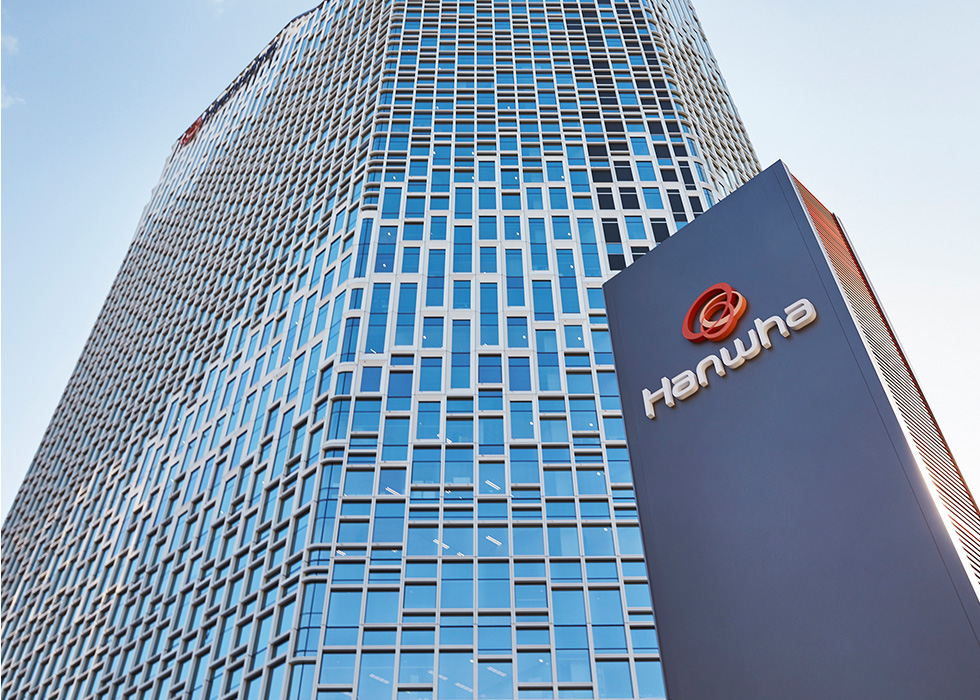Hanwha Techwin Enters the Collaborative Robot Market

Hanwha Techwin officially launched its collaborative robot at Automation World 2017
The Fourth Industrial Revolution¹ has ushered in a new era of "technologies that is blurring the lines between the physical, digital, and biological spheres," Klaus Schwab, Founder and Executive Chairman, World Economic Forum. Representative and central to this revolution is robotics – a field that Hanwha Techwin has successfully made inroads into because the company had anticipated its importance. The company is the first among Korean enterprises to release a collaborative robot² and their feat represents both the company's technological ability and its responsiveness to the evolving global market. Hanwha Techwin launched this collaborative robot, HCR-5, on March 30th and announced its vision for a full-fledged operation in robotics.
¹ Fourth Industrial Revolution
|
² Collaborative Robot
|
Over the years from having successfully built businesses – aviation & defense, energy & industrial equipment, and security (CCTV) – Hanwha Techwin has amassed deep expertise in precision machinery, control technology, image analysis, and software technology. Hanwha Techwin's foray into robotics – including unmanned surveillance robot and autonomous vehicles – was not only the result of a pragmatic decision to apply their knowhow, but also the natural next step forward.
For the robot industry, Hanwha Techwin's collaborative robot is a practical solution that saves time and labor in manufacturing. The conventional or mainstream robot in today's manufacturing industry is typically an unmanned industrial robot. These robots, however, are costly, take up large spaces, need to be separated from their operators, and require skilled technicians to control them. They are usually unaffordable for small to medium-size companies.
In contrast, collaborative robots work directly alongside their operators and do not require large spaces. So for manufacturing companies of any size, they are easy to operate, safe, and relatively affordable.
The HCR-5 is Hanwha Techwin's first collaborative robot for the robot market. The HCR-5 has high appeal for its affordability, high performance, easy operation, safe and attractive design.
The HCR-5 has a low initial investment that translates to a lower barrier to entry. It also costs less to operate. The HCR-5 only requires 1 control box and 1 teach pendant to control two robots. This reduces the operating cost to about 30 percent less than with other industrial robots.
The HCR-5 has a reach radius of 91.5cm – the farthest reach among robots in the same class. It has a repeatability of only 0.1mm, making it ideal for precision work. And the HCR-5 robot only weighs 20kg, so it can be easily moved without a forklift or any other special transporting equipment.
Another standout feature of the HCR-5 is its easily programmable user interface. A touchscreen teach pendant and a direct teaching function allow operators to teach the robot tasks by simply moving the robot body with their hands. Besides being deceptively convenient, HCR-5's collision detection function also ensures the operator's safety by automatically stopping when an imminent impact is detected.
Lastly, the source of the HCR-5's appeal is its design. It won Germany's iF Design Award 2017, one of the world's top three design awards, for its product design. The HCR-5 received positive reviews for its mix of simple straight lines and smooth curves with color harmony of black and orange colors that seem to represent the harmony between a robot and its human operator, working side-by-side.
"We expect that the launch of Hanwha Techwin's collaborative robot can serve as the momentum for Korea's robot industry to grow," said Hanwha Techwin CEO Shin Hyun-Woo at the robot's launching event. "We are committed to investing continuously in the robot business and make inroads into Asia, Europe and the wider global market."
The global collaborative robot market is currently valued at $191.86 million (as of 2016) but it is expected to grow 60 percent year over year to $32.19 billion by 2022.

HCR-5
Hanwha Group
Founded in 1952, Hanwha has grown quickly by anticipating and responding to changing business environments with a balanced business portfolio that includes energy & materials, aerospace, finance and retail & services. Our expertise and synergy in key areas have catapulted us into the seventh-largest business in South Korea and a Fortune Global 500 company. Hanwha continues to grow rapidly as we strive to pursue global leadership in all of our businesses. We are building a robust foundation for sustainable development and a brighter future for everyone.
For more information, visit: www.hanwha.com
Get the latest news about Hanwha, right in your inbox.
Fields marked with * are mandatory.
- Non-employee
- Employee





